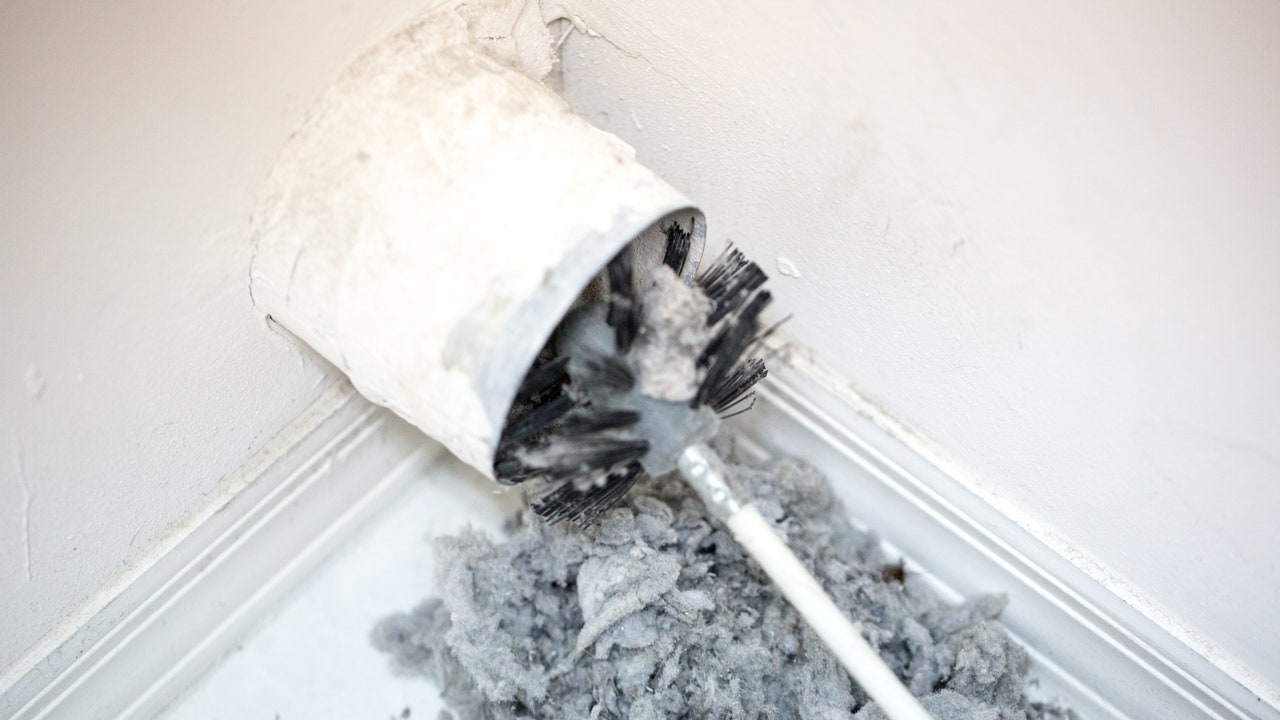How you can Clear Out a Dryer Vent in 7 Easy Steps
If you’re on a cleaning tear in the laundry room, you might as well tackle the clothes dryer vent. Knowing how to clean a dryer vent is not just a matter of cleanliness, but of safety: Dirty dryer vents are the leading cause of domestic dryer fires, according to the U.S. Fire Administration. Dryers should be cleaned at least once a year, and it’s a simple DIY task you can tackle when you have a couple of free hours to spend on home improvement. The result? Completely dry clothes, cleaner lint screens, and a whole lot more laundry satisfaction to speak of. Next up, learn how to clean your washing machine so it runs like new.
1. Gather Your Cleaning Supplies
Here are the cleaning products and supplies you’ll need to get the job done:
- Vacuum with hose attachment
- Electrical or duct tape
- Broom and dustpan
- Dryer duct cleaning kit
- Power drill
2. Pull the Dryer Out From the Wall, Unplug It, and Disconnect the Duct
Pull the dryer out from the wall. Unplug it, and if it’s a gas dryer, turn off the gas valve as well. Disconnect the dryer duct, which is located in the back of the dryer.
3. Vacuum the Inside of the Vent
Using a hose attachment, turn on your vacuum cleaner, and suction all around the entrance of the vent. Poke it inside the dryer exhaust duct and vacuum out what you can.
4. Connect the Flexible Rods in Your Dryer Duct Cleaning Kit to Your Power Drill
Now you’re going to go in deeper. With a dryer duct cleaning kit that you can find on Amazon, you can really extend your reach. Standard kits come with flexible rods that allow you to get up to 12 feet inside the duct. You’ll attach the rods together. They’re made to connect, but for added insurance, you can tape over each connection with electrical tape so there’s no chance they come apart. The kit comes with a rotating brush that should go in first. On the back end, you’ll attach a power drill to the rod near you.
5. Turn On the Drill and Let the Brush Work Its Magic
Once attached, turn the drill on to spin clockwise on medium power. Push and pull back and forth slowly, eventually pulling the brush all the way out. As you go, debris, lint, and dirt will start spilling out of the dryer duct in front of you, and you’ll start to notice the lint buildup disappear right before your eyes. It’s important to keep the drill running clockwise; if you start spinning it counterclockwise, you run the risk of the attachments disassembling and getting stuck inside the dryer duct.
5. Sweep Up the Mess
Before heading to the exterior vent, clean up the mess your cleaning left behind. Sweep up the debris and toss it. If the lint leaves residue behind, you may need to use soapy water to clean up.
6. Inspect the Exterior Vent
Your exterior vent could be located low to the ground or high near the roof on the exterior wall. If it’s near a roof on a building with multiple stories, it’s not going to be easy to access, so you can’t do any cleaning there. If, however, your exterior vent is near the ground, you can repeat the process of snaking the flexible rods through and drill brushing, only this time from the outside in.
7. Put the Dryer Back Together
Now that the cleaning is finished, it’s time to plug the dryer back in and reconnect the duct back into the dryer vent. Head to the gas line and turn the gas valve back on, if applicable.
Dryer Safety Tips: Keeping Your Dryer Vent Clean and More
The secret to keeping your dryer exhaust vent consistently clean lies in the lint trap. Make sure to remove any dryer lint from it every time you run the dryer while doing a load of laundry, especially if you use dryer sheets. This is critical. Not only will this help you maintain a clean dryer vent, it will keep the entire dryer running smoothly, improve your machine’s drying time, and decrease the risk of house fires.
In addition to simply keeping it clean, it’s also recommended that you never run a dryer unattended. Never turn on a load and leave the house. If you’re not home and a dryer fire starts, it can wreak havoc before someone notices and calls the fire department.




